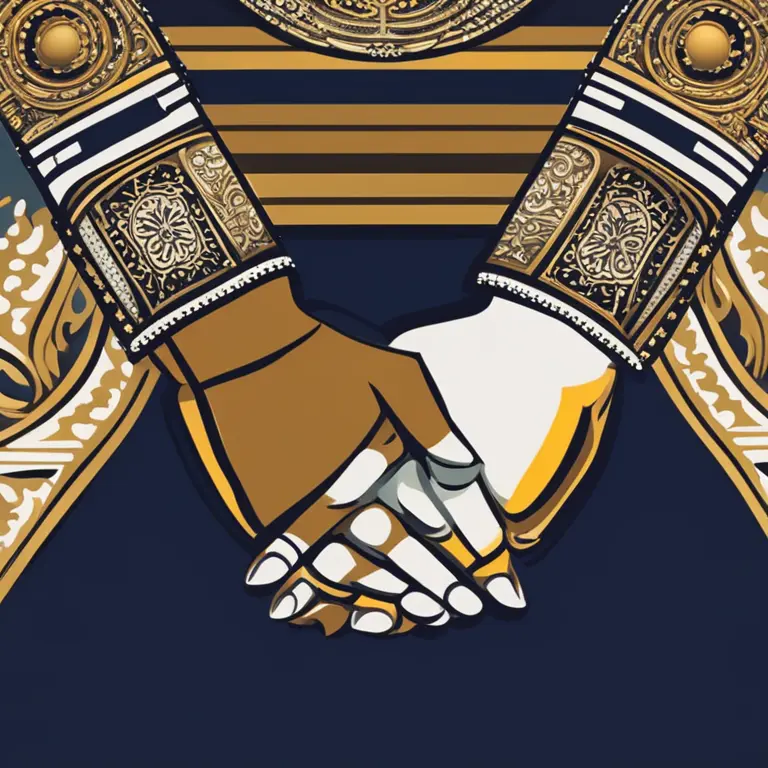
The Choice of Hand for a Marriage Proposal
Explore the traditions and beliefs behind which hand to use when making a marriage proposal and the origins of this cultural custom.
article by Nora Pennington
Proposal Traditions: An Overview
When it comes to a marriage proposal, cultural norms and traditions dictate various aspects from the knee one bends on to the hand the ring adorns. Through history, these practices have delivered us to a globally recognized symbol of engagement: the ring placed on the left hand. Many western cultures uphold the tradition of wearing the engagement and wedding rings on the fourth finger of the left hand, a practice with roots tracing back to the ancient Romans. They believed this finger contained the 'vena amoris' or 'vein of love' that ran directly to the heart. While most Western countries follow this left-hand custom, it's intriguing to note that there are cultures where the right hand plays the pivotal role in symbolizing engagement and matrimony.

The Right-Hand Proposal in Certain Cultures
In some cultures and countries, the right hand is considered the correct hand for the engagement ring and later the wedding band. Countries like Russia, Greece, and Colombia traditionally place the ring on the right hand based on historical and religious significance. It is often tied to the symbolism of the right hand representing honor and trust, which are characteristics highly valued in a marriage. The religious practices, such as those found in Orthodox Christian ceremonies, may also reflect this preference, highlighting the importance of understanding cultural nuances when discussing engagement traditions.

Left-Handed Dominance in Western Societies
Despite global variations, many western nations predominantly use the left hand for proposals and engagements, a detail that's important for those planning to propose in countries such as the United States, Canada, the UK, and many European states. This widespread convention can be attributed to the influence of historical beliefs, popular culture, and the spread of Western fashion. However, prospective fiancés and fiancées should still consider their own cultural backgrounds and personal preferences when deciding on the hand for that meaningful proposal.

Personal Choice and Symbolism
Today's society sees a blend of tradition with personal choice, giving rise to new customs. Some individuals opt for alternative fingers or hands to represent their commitment in a way that carries personal symbolism or offers practical benefits. For instance, left-handed individuals might place the ring on their non-dominant hand to prevent wear and tear, while others might choose different fingers for style or comfort reasons. Additionally, some same-sex couples create their own traditions to represent their unions, emphasizing that the 'proposal hand' can be less about historical precedent and more about personal significance.
Future Trends and Evolving Practices
Looking toward 2024 and beyond, we may witness further evolution in proposal customs, as shifting societal values and globalization introduce new ideas and practices. The digitization of experiences and widespread sharing on social media also play a role, often creating fresh trends that influence personal choices. Regardless of hand or finger choice, the essence of a proposal remains unchanged: it symbolizes love, commitment, and the desire to unite lives together in partnership and mutual respect.
Published: 1/11/2024
Modified: 1/12/2024
More predictions
Come back here soon to learn more about yourself and your future


Can We Trust Palmistry?
Delving into the realm of palmistry, this article examines its credibility and place in contemporary spiritual practices.


Can Palmistry Predict Your Path Incorrectly?
Delving into the accuracy of palm readings, this article examines whether palmistry can lead to incorrect predictions about one's life and destiny.


The Possibility of Palmistry in Cancer Detection
Examining the claims that palmistry holds any potential in identifying the risk of cancer: a deep dive into the world of mysticism and medicine.